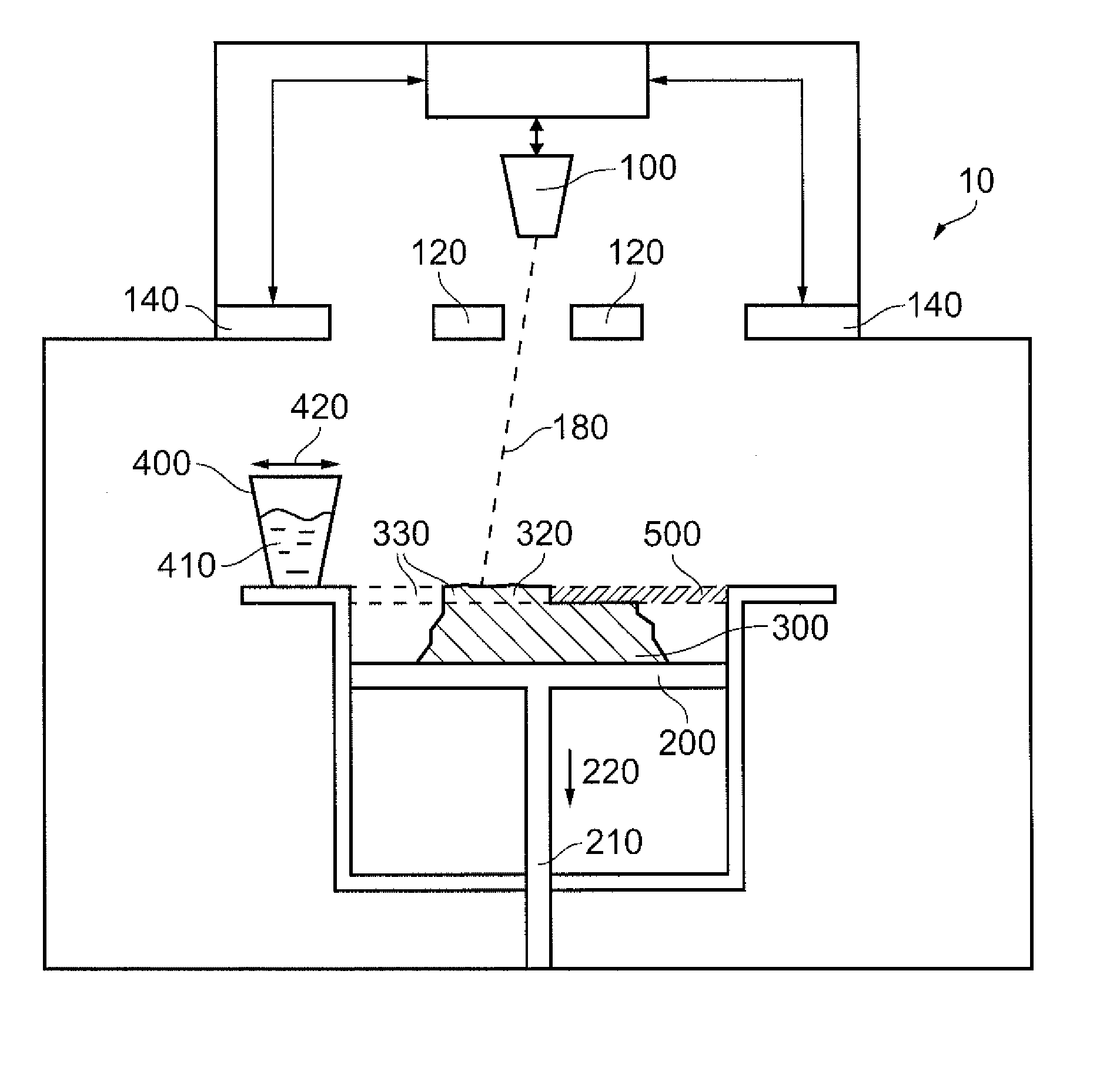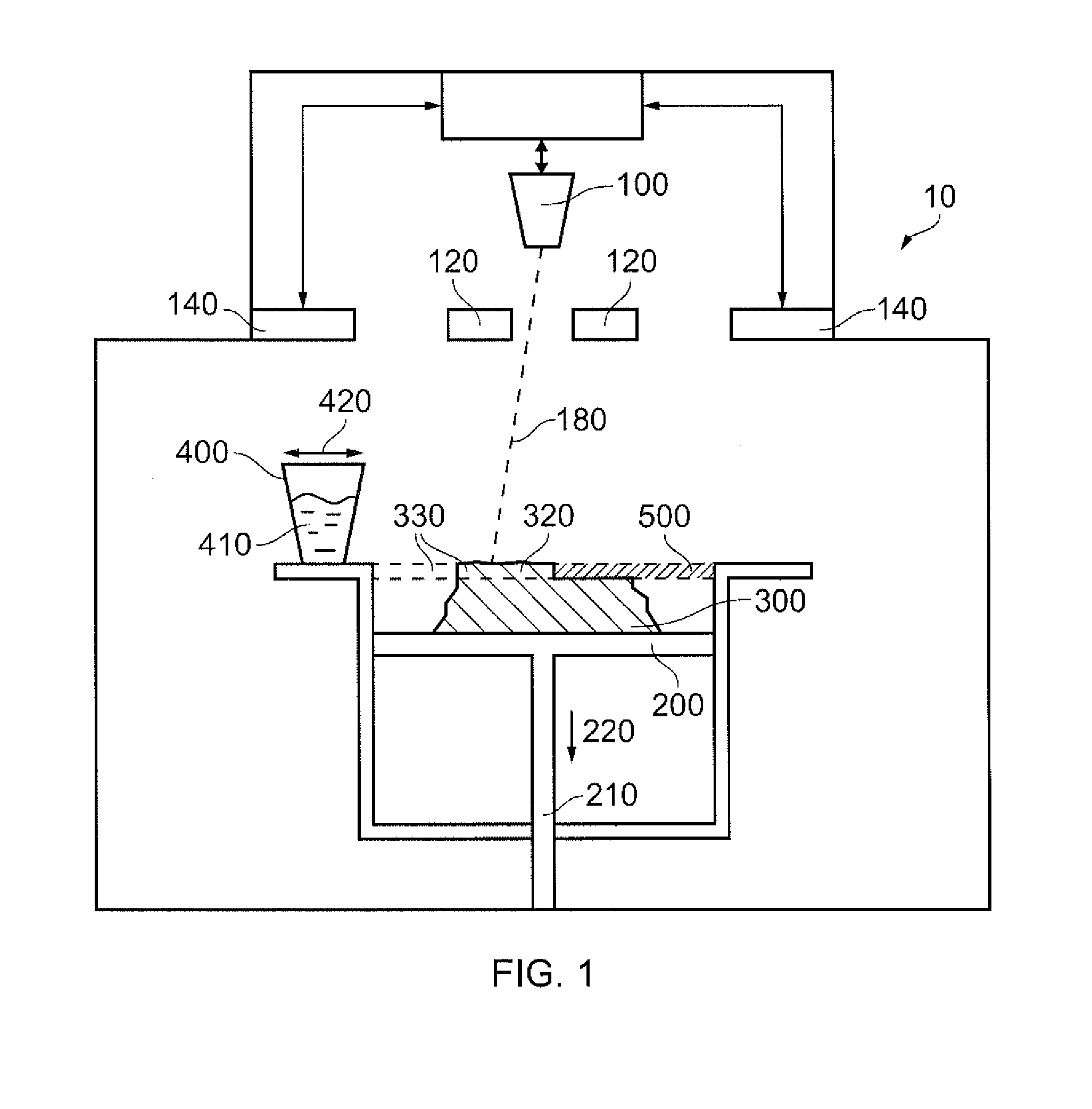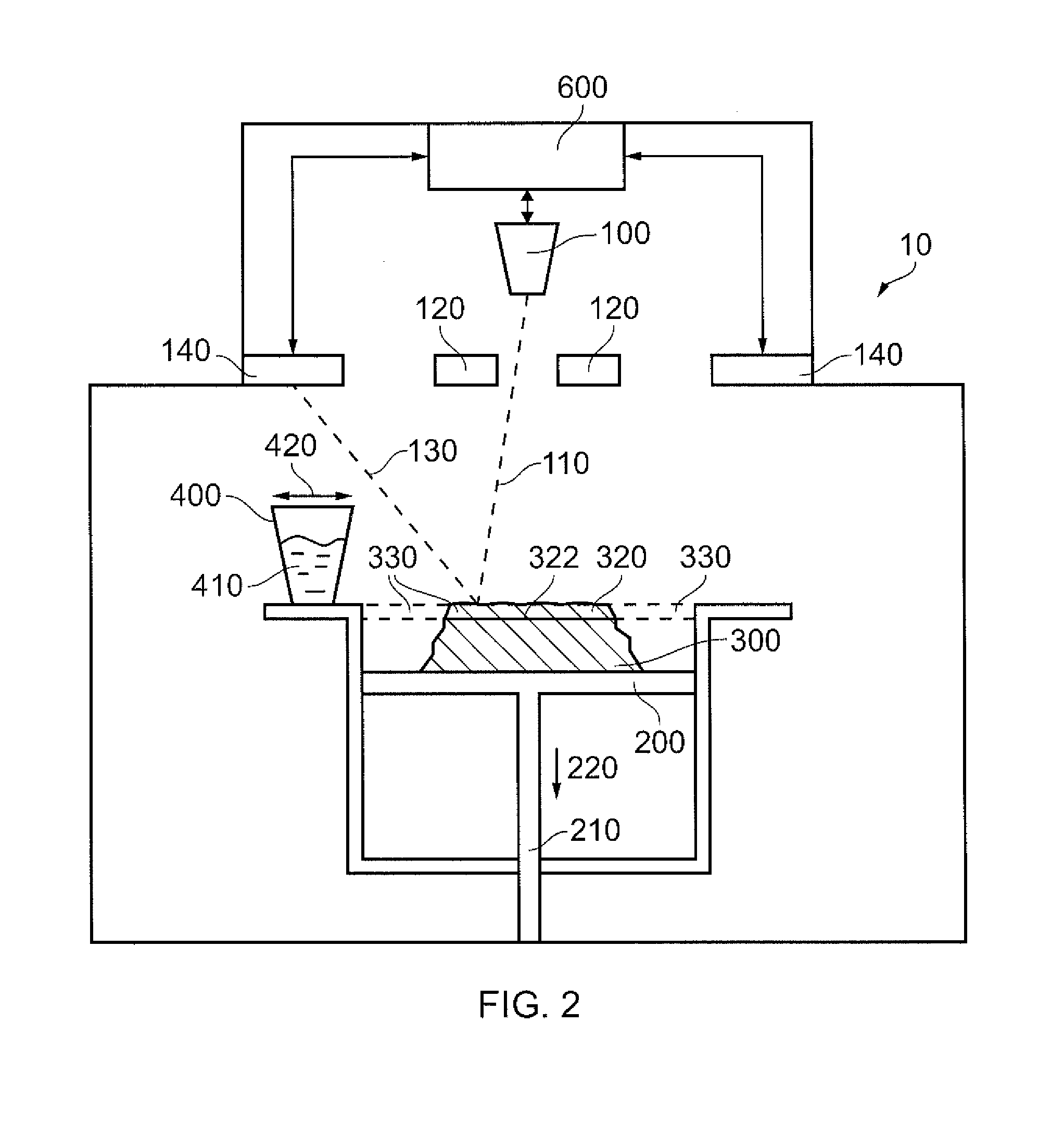Method of manufacturing a component
a manufacturing method and component technology, applied in the direction of additive manufacturing processes, manufacturing tools, transportation and packaging, etc., can solve the problems of unaccounted distortion of components during manufacture, incongruity of final components, and inability to achieve geometric and/or mechanical properties
- Summary
- Abstract
- Description
- Claims
- Application Information
AI Technical Summary
Benefits of technology
Problems solved by technology
Method used
Image
Examples
Embodiment Construction
[0055]As explained elsewhere herein, additive layer manufacturing (ALM) methods may be used to manufacture components by sequential selective melting of thin powder layers. For example, an EBM machine may be used to manufacture a metallic component by sequential selective melting of thin metal powder layers.
[0056]An example of an additive layer manufacturing machine (or ALM machine) 10 for use in such a method is shown in FIG. 1. The ALM machine 10 comprises an electron beam source 100 for generating an electron beam 180 (which may be referred to as a melting electron beam). In use, the electron beam 180 is focussed using focusing elements 120, such as lenses and / or mirrors, towards a component 300 being manufactured. Specifically, the electron beam 180 is focussed onto a layer of powder (for example a layer of powder metal) 500 to be melted by the electron beam 180 which subsequently melts to form a solid layer (for example a solid metal layer) of the component 300. The powder laye...
PUM
| Property | Measurement | Unit |
|---|---|---|
| Power | aaaaa | aaaaa |
| Shape | aaaaa | aaaaa |
| Mechanical properties | aaaaa | aaaaa |
Abstract
Description
Claims
Application Information
 Login to View More
Login to View More - R&D
- Intellectual Property
- Life Sciences
- Materials
- Tech Scout
- Unparalleled Data Quality
- Higher Quality Content
- 60% Fewer Hallucinations
Browse by: Latest US Patents, China's latest patents, Technical Efficacy Thesaurus, Application Domain, Technology Topic, Popular Technical Reports.
© 2025 PatSnap. All rights reserved.Legal|Privacy policy|Modern Slavery Act Transparency Statement|Sitemap|About US| Contact US: help@patsnap.com



